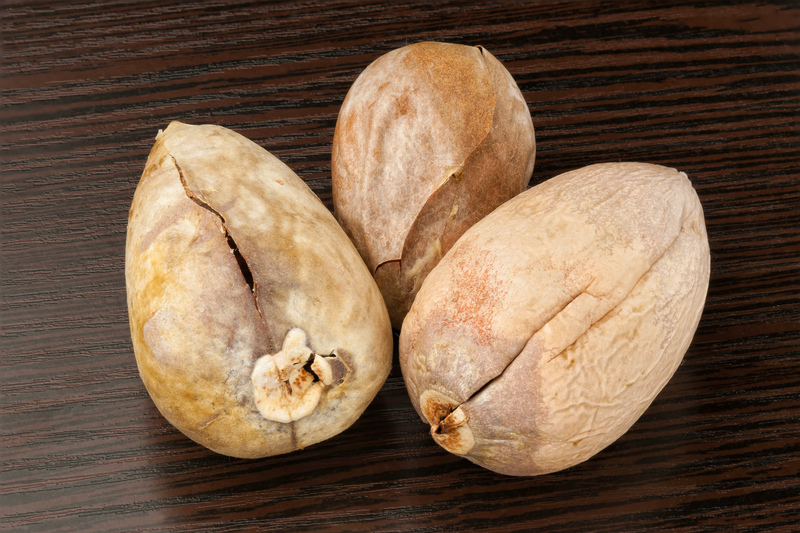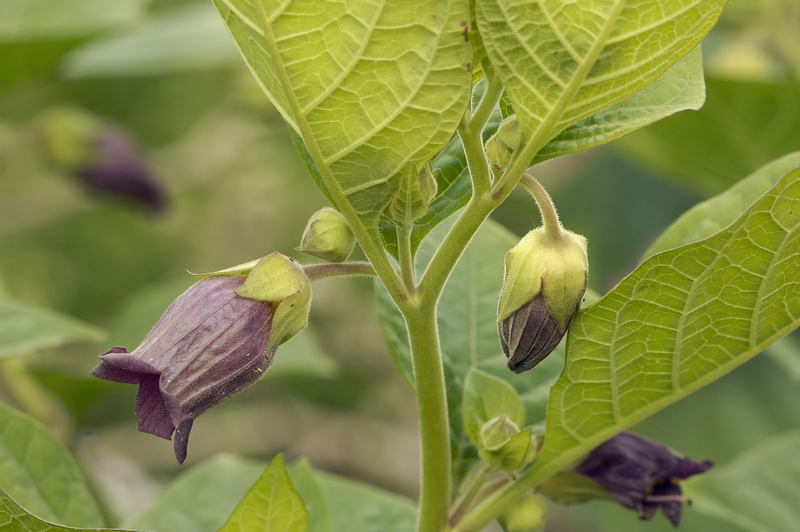Master Your Landscape with 3 Weed Control Tips
Posted on 28/05/2025
Master Your Landscape with 3 Weed Control Tips
Are you struggling to keep your lawn and garden free of unsightly and stubborn weeds? Taking control of your landscape doesn't have to be a constant uphill battle. With the right weed control strategies, you can maintain a beautiful, healthy, and flourishing yard all year round. In this comprehensive guide, we'll share three expert weed control tips to help you master your landscape and achieve a weed-free paradise.

The Importance of Effective Weed Control in Landscaping
Weeds can undermine the beauty, health, and vitality of your yard. These unwanted plants compete with your garden's grasses, flowers, and shrubs for vital nutrients, sunlight, and water. Beyond the aesthetic impact, uncontrolled weed growth can:
- Smother and weaken desirable plants
- Attract destructive pests and plant diseases
- Reduce soil nutrients and moisture
- Negatively affect your property's value and curb appeal
That's why developing effective lawn weed control habits is critical for any homeowner or landscape enthusiast. Let's delve into our top three best weed control tips to transform your landscape into a stunning, weed-free oasis.
1. Mulching: Nature's Weed Blocker
Maximize Mulch to Minimize Weeds
One of the most efficient and environmentally friendly ways to keep weeds at bay is by utilizing mulch in your garden beds. Mulching provides a physical barrier that prevents sunlight from reaching weed seeds, stopping them from sprouting. Additionally, mulch retains soil moisture, moderates temperature, and adds valuable organic matter as it breaks down.
Types of Mulch for Weed Suppression
- Organic Mulch: Includes bark chips, shredded leaves, pine needles, compost, and straw. Organic mulch not only blocks weeds but also enriches your soil over time.
- Inorganic Mulch: Stones, gravel, landscape fabric, or black plastic sheeting offer long-lasting weed protection, especially suited for walkways or low-maintenance beds.
How to Apply Mulch for Maximum Weed Control
- Remove Visible Weeds: Always clear existing weeds before applying new mulch layers.
- Choose the Right Depth: Aim for 2-4 inches of mulch for adequate coverage; too thin and weeds will poke through, too thick may stifle plant roots.
- Maintain the Mulch: Refresh mulch each season and check for low spots where weeds could break through.
Tip: Avoid piling mulch directly against tree trunks or plant stems (mulch volcano) as this can harbor pests and encourage disease.
2. Smart Planting and Landscape Design
Outsmart Weeds with Dense Planting Techniques
Nature abhors a vacuum. Leaving large areas of bare soil open is an open invitation to weeds. By strategically selecting and placing plants, you can create a thick protective canopy that naturally shades out weed seeds.
Effective Strategies for a Weed-Resistant Landscape
- Use Ground Covers: Low-growing ground cover plants like creeping thyme, ajuga, or sedum quickly fill in spaces and outcompete weeds.
- Dense Plant Spacing: Group flowers, shrubs, and perennials closely according to their mature size for a living weed barrier.
- Choose Vigorous Plants: Native plants and varieties known for rapid growth can better contend with weed threats.
- Layer Your Plantings: Tall shrubs, medium perennials, and short ground covers create a multi-level canopy, further minimizing sunlight for weed seeds.
Designing Your Landscape for Long-Term Weed Management
Proper landscape design isn't just for looks--it's a key method of weed control. Incorporate winding paths, closely spaced plants, and raised beds to limit open soil. Consider landscape edging to separate garden beds from grassy areas or walkways, preventing grass and weed spread.
Maintaining Healthy Soil
Healthy, rich soil helps your landscape plants to grow vigorously, making it harder for weeds to compete. Add compost and organic amendments regularly, test soil pH, and avoid over-tilling which brings new weed seeds to the surface.
3. Proactive and Timely Weed Removal
Stay Ahead with Early and Consistent Weed Pulling
No matter how good your mulching or planting strategies are, some weeds will inevitably emerge. The third tip to mastering your landscape is to remove weeds promptly and thoughtfully before they mature and spread new seeds.
Best Practices for Hand Weeding
- Weed When Soil Is Moist: After rain or watering, it's easier to pull weeds roots and all.
- Use the Right Tools: Invest in a hand weeder, hoe, or dandelion puller for stubborn species.
- Remove the Entire Root: Many weeds regrow from root fragments; pull gently and get the whole plant.
- Dispose of Seed Heads: Avoid composting weeds with seeds--dispose of them in the trash or burn (following local laws).
Routine Weed Patrol
Develop a regular weed inspection habit. Even just 10-15 minutes a week walking your landscape can catch new weed sprouts before they take hold. Focus especially after rainfall and in early spring, when weeds grow rapidly.
Alternative and Eco-Friendly Weed Control Solutions
- Hot Water: Pouring boiling water over driveway and sidewalk weeds can kill them quickly without chemicals.
- Homemade Vinegar Sprays: While not selective, household vinegar can damage young weeds in pavement cracks and patios.
- Solarization: Covering infested beds with clear plastic for several weeks in hot weather can cook weed seeds in the soil.
Note: Chemical herbicides should be a last resort. If you choose a commercial weed killer, select the right product for your specific weed type and apply carefully to avoid harming desirable plants and pollinators.
Bonus Tips: Staying Weed-Free Year-Round
- Overseed Bare Patches in Lawns: A thick, healthy turf will naturally crowd out most weeds.
- Install Landscape Edging: Physical barriers keep creeping grasses and weeds out of flower beds.
- Rotate Crops in Vegetable Gardens: Crop rotation disrupts weed and pest cycles.
- Clean Tools and Mowers: Avoid spreading weed seeds by washing off soil and debris after yard work.
- Monitor New Plantings: Potting soil and nursery plants can harbor weed seeds. Inspect and weed them before transplanting.
Common Weed Types and How to Identify Them
- Broadleaf Weeds: Dandelions, clover, plantains, and chickweed--look for broad, flat leaves.
- Grassy Weeds: Crabgrass, quackgrass, and annual bluegrass resemble grass blades, often lighter in color.
- Sedges: Nutgrass and yellow nutsedge have triangular stems and prefer wet, poorly drained soil.
Identifying weeds accurately helps you choose the best weed management technique--some perennial weeds require digging the roots, while annual weeds can be suppressed effectively with mulch or quick removal.
Key Takeaways: How to Achieve Mastery Over Landscape Weeds
- Layer mulch in your garden beds to block light, retain moisture, and enrich the soil.
- Plant densely and use ground covers to fill bare spots and shun invasive weed growth.
- Remove weeds consistently, especially before they seed, and practice preventive maintenance across all seasons.
By incorporating these simple yet highly effective weed control tips, you'll not only enjoy a healthier and more visually appealing landscape, but you'll also save valuable time and resources in the long run. The effort you put into proactive weed management pays off with less work and more time spent enjoying your beautiful, lush yard.

Frequently Asked Questions About Weed Control in Landscaping
How Often Should I Mulch My Garden Beds for Maximum Weed Suppression?
Mulch should be refreshed at least once a year, ideally in spring or fall. Check regularly for thin spots and replenish to maintain a depth of 2-4 inches.
Can I Use Landscape Fabric Under Mulch for Extra Weed Control?
Yes, landscape fabric can further block weed growth under mulch, especially in perennial and shrub beds. However, organic mulch alone is usually sufficient for most gardens, and fabric can make planting or amendments harder over time.
What Is the Safest Way to Remove Weeds from a Lawn?
Hand-pulling, spot-treating visible weeds, and maintaining a thick, healthy turf through overseeding and fertilization are the safest and most sustainable methods. Avoid broad application of herbicides unless needed for severe infestations.
Are There Any Plants That Act as Natural Weed Suppressors?
Absolutely! Ground covers like vinca, ajuga, and creeping juniper are great at crowding out weeds, as are dense, fast-growing perennials and ornamental grasses.
Conclusion: Take Charge and Master Your Landscape with These Weed Control Strategies
Weeds are a frustrating but manageable part of landscaping. With these three weed control tips--mulching, smart planting, and early removal--you can finally master your landscape and create a welcoming outdoor space that's lush, inviting, and mostly weed-free. Remember, consistency is key; a little prevention goes a long way!
For more practical landscape advice or specific solutions to stubborn weed problems, consult your local gardening center or extension office. With the right approach, weed control won't feel like a chore--it'll become a natural part of your vibrant, thriving landscape routine.

